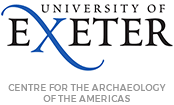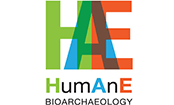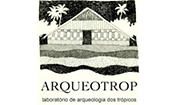Past Human Impacts in Amazonia
Raised Fields, Monumental Mounds, Ring Ditches and Causeways of the Bolivian Amazon
Amazonia is home to half the tropical rainforest on Earth, and has long been considered one of the last untamed wilderness areas on the planet, still largely untainted by human activities.
Although humans have lived here for at least the last 12,000 years, until recently the long-accepted paradigm was of the «noble savage» living in harmony with these ancient forests, existing as small tribes with little discernible impact upon them.
Such a view was widely shared, not only among archaeologists and anthropologists, but also most tropical ecologists, whose interpretations of patterns of biodiversity and ecological changes are predicated on the assumption that these forests are largely «pristine» or «virgin». In recent years, though, increasing archaeological evidence for sizeable and complex, Pre-Columbian societies (pre-European contact -1492) within the Amazon lowlands, such as earth-mounds, causeways, and canals, has challenged this «virgin wilderness» paradigm, pointing to larger scale human impacts than merely local-scale slash-and-burn agriculture.
However, there is intense debate over the geographic scale of Pre-Columbian human impacts within Amazonia, as well as their ecological legacy. At one end of the spectrum are those who argue that these archaeological data are still consistent with a predominantly «virgin» rainforest wilderness, whilst at the other end of the spectrum are those who argue that the very notion of «virgin» forests is a myth, and that pre-1492 Amazonia was an intensively managed «domesticated landscape» or «cultural parkland».
Only by using an inter-disciplinary approach can this debate be resolved. Our project focuses on the Bolivian Amazon because it contains evidence of intensive pre-1492 land-use, i.e. large habitation earthmounds, agricultural raised-fields, causeways, canals, and landscape-scale fish traps, as well as «apparently virgin» tropical rainforests. Our aim in this project is to determine the impacts of different kinds of pre-Columbian land-use upon different types of Bolivian Amazonian forest and savannas.
Funded by the Leverhulme Trust and with paleoecologist Francis Mayle (Geosciences, Edinburgh), archaeologist Heiko Prümers (German Archaeological Institute) and remote sensing specialist Ian Woodhouse (Geosciences, Edinburgh), this project aims to use a cross-disciplinary approach to tackle several unanswered questions about this culture, including: when and how these seasonally flooded savannas were transformed into agricultural landscapes? What crops were cultivated in the raised fields? What role fire played in the transformation of the landscape and, more importantly, what was the environmental impact and ecological legacy of these human transformations? To what extent were changes in forest cover over the last three millennia in the Bolivian Amazon «natural» (i.e. climate-driven) or instead anthropogenic (i.e. a function of pre-Columbian land-use and post-Conquest abandonment)? To what extent did different pre-Columbian cultures alter the species composition of different types of tropical forest in Amazonian Bolivia?
Preliminary results of the project show the first comprehensive archaeobotanical evidence of the diversity of plants cultivated, processed, and consumed, by the pre-Hispanic inhabitants of the Amazonian lowlands of Bolivia including maize (Zea mays), manioc (Manihot esculenta), yam (Dioscorea sp.), squash (Cucurbita sp.), peanut (Arachis hypogaea), cotton (Gossypium sp.), and palm fruits (Arecaceae).
Publications:
Dickau, R., M. C. Bruno, J. Iriarte, H. Prümers, C. Jaimes Betancourt, I. Holst and F. E. Mayle. 2012. Diversity of cultivars and other plant resources used at habitation sites in the Llanos de Mojos, Beni, Bolivia: evidence from macrobotanical remains, starch grains, and phytoliths. Journal of Archaeological Science 39:357-370. [Abstract]
Iriarte, J. and R. Dickau. 2012. As culturas do milho? Arqueobotânica de las sociedades hidráulicas das terras baixas sul-americanas. Amazônica 4:30-58. [Open Access]
Whitney, B. S., E. A. C. Rushton, J. F. Carson, J. Iriarte and F. E. Mayle. 2012. An improved methodology for the recovery of Zea mays and other large crop pollen, with implications for environmental archaeology in the Neotropics. The Holocene. [Abstract]
SAA Intercontinenal Meeting 2011 – [Poster].
Project Partners:
Dr. Francis Mayle, Institute of Geosciences, University of Edinburgh.
Dr. Heiko Prümers, German Archaeological Institute.
Dr. Ruth Dickau, Department of Archaeology, University of Exeter.
Dr. Bronwen Whitney, Institute of Geosciences, University of Edinburgh.



